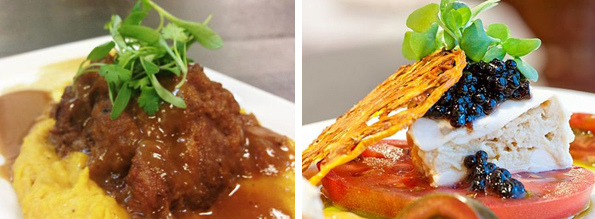Peter Sclafani has made a name for himself in the culinary world by cooking a unique mash-up of southern Italian and French Creole cuisine.
The co-owner and executive chef of Ruffino’s in Baton Rouge, La., is a third-generation chef who, despite never attending culinary school, has been named Restaurateur of the Year twice in a row by the Louisiana Restaurant Association and was the featured guest chef at New York’s James Beard House on April 6. He will also release a cookbook titled "The Seasons of Louisiana" later this year.
Sclafani discussed with Nation’s Restaurant News how local and seasonal ingredients, also at the heart of Italian and Creole cuisine, influence menu development at Ruffino's.
RELATED
• Kevin Gillespie plans new Atlanta restaurant
• 1200° Chophouse mitigates beef costs, health care
• More independent restaurant news
Describe your approach to French Creole–Italian cooking.
Creole cuisine in Louisiana is so strong that it takes over everything. When you go to an Italian restaurant in New Orleans, it’s not the food you’d eat in Italy. Really what’s at the heart of Italian cooking is cooking regionally and seasonally. That’s what we do in Creole cuisine. We use the influence from the family heritage but with local ingredients. We’re doing arancini [rice balls] with crawfish. That’s a good example of how we combine the Creole with some of the Sicilian technique.
How do the seasons in Louisiana influence your menu?
We look at proteins that come into season. Right now we’re in crawfish season.
We’re about ready to come into Creole tomato season. It’s like an heirloom tomato in that the guys who grow the tomatoes carry the seeds forward every year. [They’re] using same seeds from generation to generation. The tomatoes are not grown to be shipped. They’re allowed to ripen on the vines.

What are some spring ingredients you’re looking forward to?
We’ve phased out crabmeat at this point. Crabs are in their mating period right now. Crawfish are really plentiful. Lent is over and Easter is over, so the price starts to come down. As the water warms up soft shell crabs will start.
How do you use these ingredients on your menu?
Crawfish and tomatoes are versatile. We do one dish that combines both of those. We do some homemade gnocchi made with crawfish and make crawfish butter.
How would you characterize the local food movement in Baton Rouge restaurants?
It’s gaining in popularity. A lot of times the menus are unfortunately kind of standardized. Restaurants will run a menu and not change it.
Farmers markets are becoming a lot more popular. I’m on the board of a local farmer’s market in Baton Rouge [Red Stick Farmer’s Market]. My mission is to get more restaurants to use farmer’s markets and also work with farmers to provide things restaurants need. Sometimes they grow things that aren’t selling on menus. My role is to try to get farmers and chefs together so farmers know what chefs want to buy, and getting chefs to say, ‘Hey, I’m willing to pay a little more money to get a great local product.’ That’s starting to grow and catch on a little more in Baton Rouge.
How does your menu for the James Beard dinner [held on April 6] reflect Baton Rouge’s seasons?
[We’re serving the] crawfish arancini. We’ve got some nice corn in a corn and crab shooter. We’re approaching end of the season for oysters. We’re doing charbroiled oysters with some tasso, a spicy ham used to season Cajun dishes. We have gnocchi with crawfish with Mississippi rabbit.
There’s a local farmer [Chappapeela Farms] who, besides growing vegetables, started producing ducks. What I brought this time is some of their pork. One of the dishes I really like are pork cheeks. I get a little resistance in Baton Rouge because not everyone is serving cheeks. We run it as an appetizer so people are willing to risk trying it. We also took trotters and braised them and pulled the meat and made some ravioli out of the trotters.
For dessert we wanted to show the Creole–Italian influence, so we’re doing a panna cotta made with café au lait made with a local coffee with chicory coffee that’s popular in New Orleans. We’re serving that with beignets.
Contact Marcella Veneziale at [email protected].

